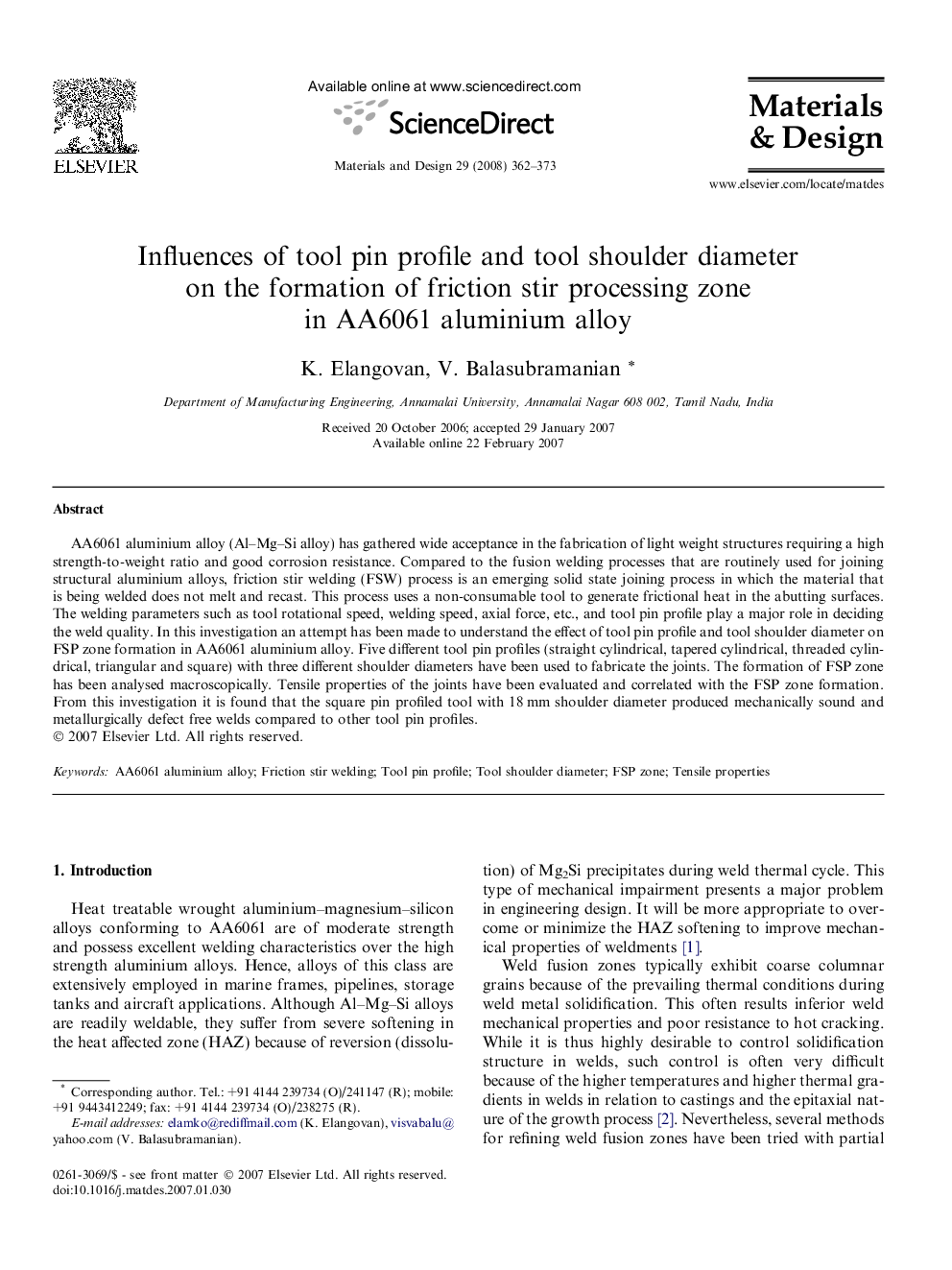| Article ID | Journal | Published Year | Pages | File Type |
|---|---|---|---|---|
| 833315 | Materials & Design (1980-2015) | 2008 | 12 Pages |
AA6061 aluminium alloy (Al–Mg–Si alloy) has gathered wide acceptance in the fabrication of light weight structures requiring a high strength-to-weight ratio and good corrosion resistance. Compared to the fusion welding processes that are routinely used for joining structural aluminium alloys, friction stir welding (FSW) process is an emerging solid state joining process in which the material that is being welded does not melt and recast. This process uses a non-consumable tool to generate frictional heat in the abutting surfaces. The welding parameters such as tool rotational speed, welding speed, axial force, etc., and tool pin profile play a major role in deciding the weld quality. In this investigation an attempt has been made to understand the effect of tool pin profile and tool shoulder diameter on FSP zone formation in AA6061 aluminium alloy. Five different tool pin profiles (straight cylindrical, tapered cylindrical, threaded cylindrical, triangular and square) with three different shoulder diameters have been used to fabricate the joints. The formation of FSP zone has been analysed macroscopically. Tensile properties of the joints have been evaluated and correlated with the FSP zone formation. From this investigation it is found that the square pin profiled tool with 18 mm shoulder diameter produced mechanically sound and metallurgically defect free welds compared to other tool pin profiles.
